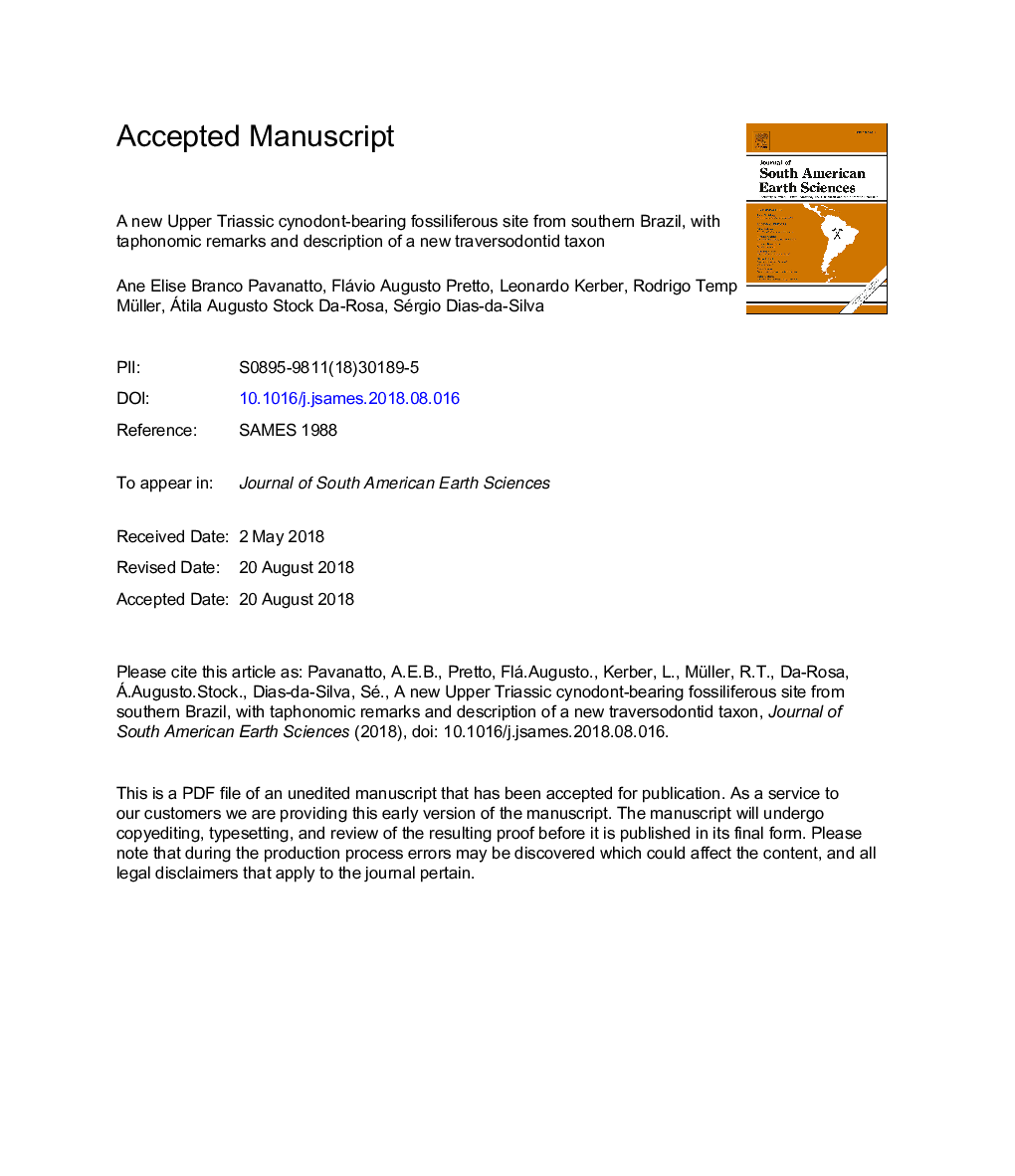| Article ID | Journal | Published Year | Pages | File Type |
|---|---|---|---|---|
| 10119911 | Journal of South American Earth Sciences | 2018 | 74 Pages |
Abstract
A new Upper Triassic fossiliferous outcrop, the Niemeyer Site, from the Santa Maria Supersequence (Paraná Basin, Southern Brazil) is reported. The lithology found in this locality is consistent with that found in the Candelária Sequence. The high prevalence of traversodontid cynodonts in this site is particularly notable, with collected specimens mostly composed of isolated bones and fragmentary specimens, but also including well-preserved skulls and mandibles. Probainognathian cynodonts and archosauromorphs are also present, but they are rare in comparison. There is a predominance of Voorhies Group III (Group IIIâ¯>â¯Group Iâ¯>â¯Group II) for the specimens so far collected. These data, as well as the sedimentary data of the outcrop, indicate a mostly autochthonous fossiliferous assemblage. Some specimens display evidence of ichnological activity of invertebrate scavengers (bone alteration comprising small tubules, channels and isolated boreholes). A remarkable aspect of this site is the presence of a new traversodontid cynodont closely related to Exaeretodon. Although similar to the former taxon, the new taxonomic unit shows a unique combination of several craniodental features not present in other cynodonts. Given that no traversodontids are recorded in the uppermost levels of the Candelária Sequence, this site is likely placed in the lower levels of this unit, with the fauna suggesting a Carnian age.
Related Topics
Physical Sciences and Engineering
Earth and Planetary Sciences
Earth and Planetary Sciences (General)
Authors
Ane Elise Branco Pavanatto, Flávio Augusto Pretto, Leonardo Kerber, Rodrigo Temp Müller, Átila Augusto Stock Da-Rosa, Sérgio Dias-da-Silva,
